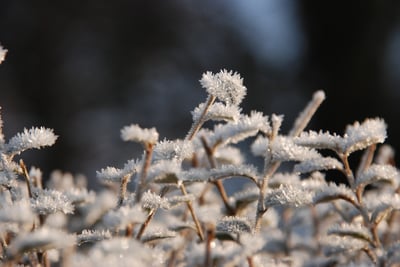

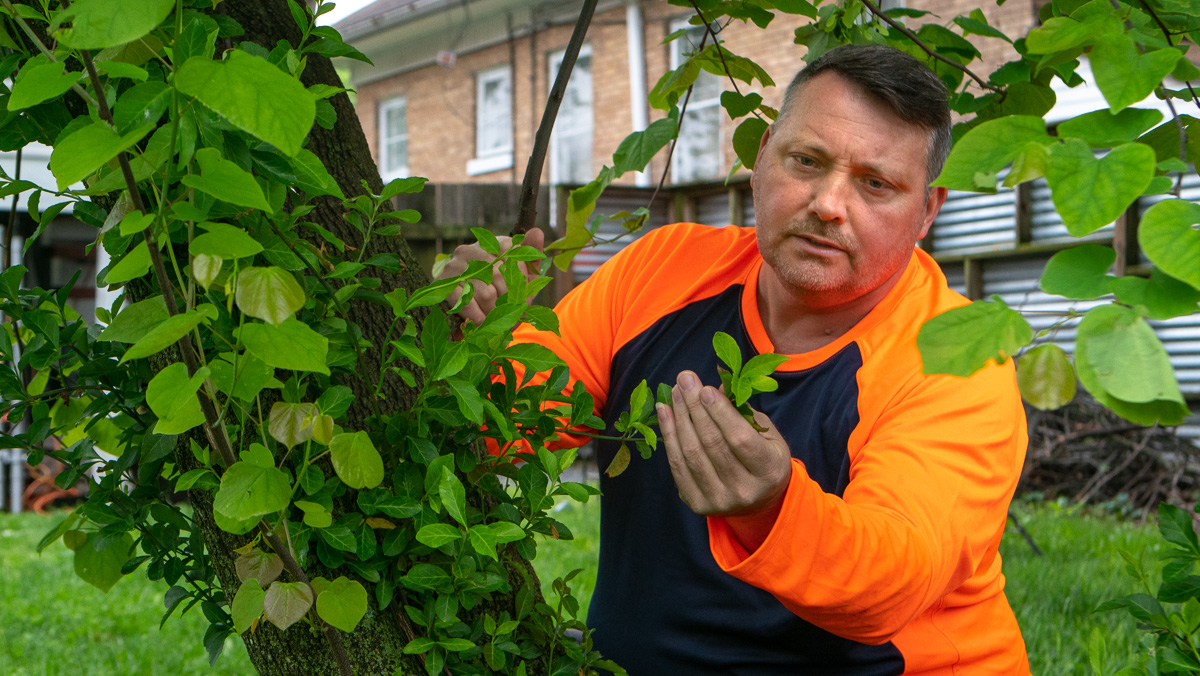
The landscaping around your Louisville property is a valuable asset. You want to do what you can to maintain the health of your trees, plants, and shrubs so that you can enjoy them for many years to come.
Unfortunately, insects and diseases can pose major threats. Protecting plants from pests and disease is important when it comes to preserving their health.
We know that caring for your landscape can be stressful, but we are here to help. In this guide, we will discuss everything involved in protecting your landscape. After reading this, you’ll have a much better understanding of the potential threats your plants face but also how to combat them.
Common Plant Insects in Louisville
Common Plant Diseases in Louisville
How to Protect Plants from Pests and Disease
Treating Plants for Disease and Pest Infestations
Seasonal Plant Maintenance
Professional Plant Health Care Services in Louisville
Why Choose Limbwalker for Plant Health Care
There are more than 55 common tree pests here in the Louisville region. Pests can damage plants and trees in many ways from chewing on leaves to boring holes in the bark itself.
Some that we see most frequently include:
Bagworms are types of caterpillars that are characterized by the “bag” that they form for shelter. These bags are made from the caterpillar’s silk woven with pieces of your tree’s foliage. This is one of the tree bugs that people actually can spot with their eyes as they aren’t exactly tiny. The bag might be as long as two inches. These caterpillars will be hanging in their bags when not actively feasting on your tree leaves.
Mites cause damage to plants by sucking their sap. But not all mites are bad. Trees can have good mites and bad mites. The “good mites” are those that are beneficial to the tree because they eat bad mites, like Spider Mites. Spider Mites are aggressive tree bugs that cause a lot of damage by sucking the cell content out of leaves. They are tiny but highly destructive.
The Emerald Ash Borer is an invasive pest that has killed millions of Ash Trees in North America. If you have an Ash Tree on your property, it is definitely at risk. Fortunately, there are preventative measures specifically designed for this pest. At Limbwalker, we use an annual soil drench or a two-year tree injection to address EAB and save Ash trees. Treatments for EAB occur from May through July.
Borer insects feed inside of the tree. For that reason, you are more likely to spot signs of a problem than the insect itself. Tree borers leave behind holes in trees and sawdust from their boring. If tree borer insects have done some significant damage, you might also start to notice signs of a health problem with the tree. As the flow of water and nutrients may be weakened, the structure of the tree might struggle. You may even notice parts of the bark falling off.
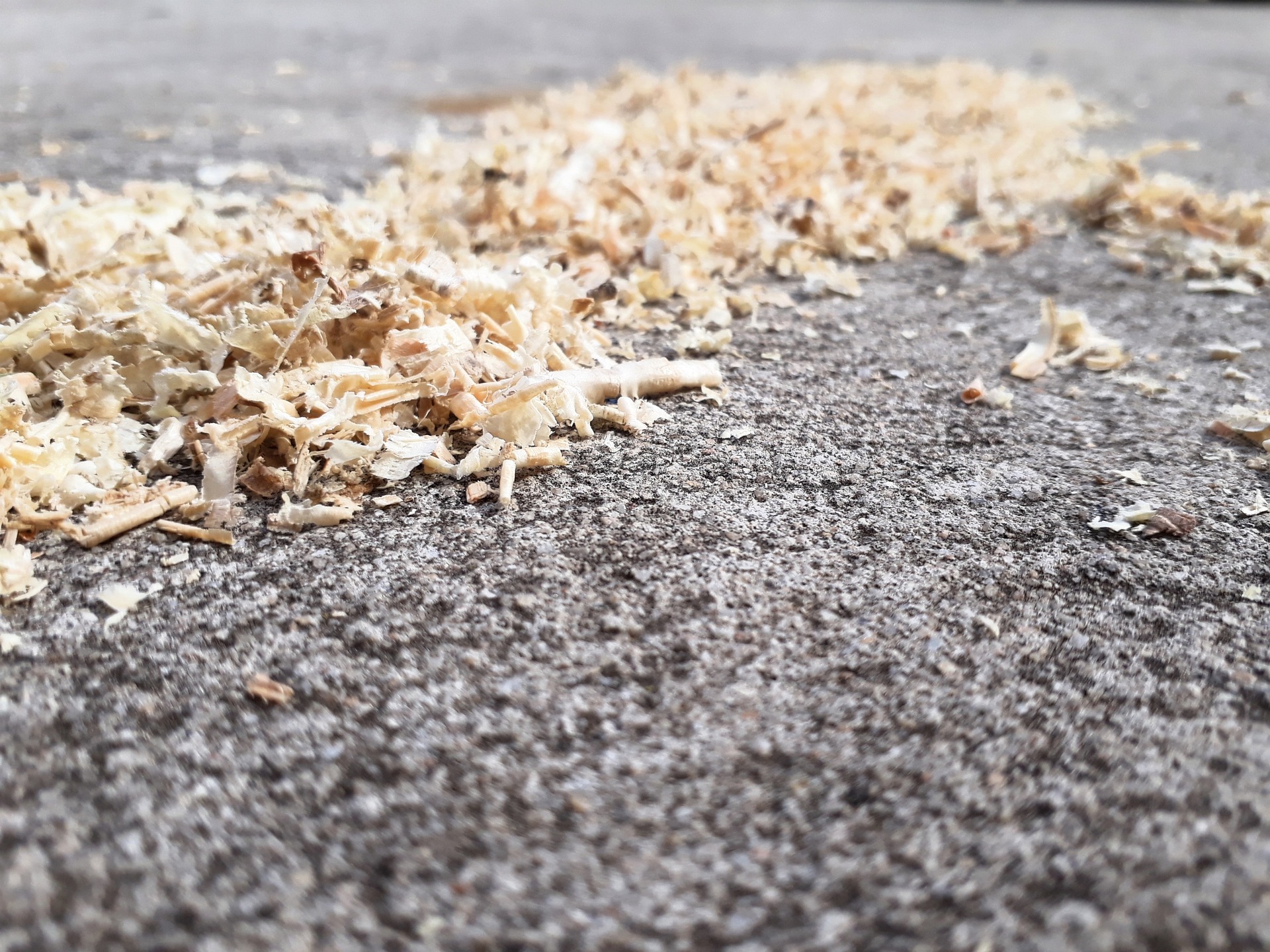
Aphids are small pear-shaped tree bugs that appear in white, black, green, or brown. They can cause problems for your trees as they tend to feed in groups. They also prefer to feast on new growth.
Scale is another type of sap-feeding tree pest. Scale bugs use their piercing-sucking mouthparts to drain fluid from plants. As this occurs you might notice that your plant leaves are drooping and wilting. Like aphids, scale can also produce honeydew. If you see this sticky substance or you notice an influx of pests like ants and flies, there may be a tree pest feeding on your sap.
Japanese beetles are large enough that people tend to spot the shiny green pests on their trees. Unfortunately, if you have seen one Japanese beetle on your tree, there are likely to be many more. That’s because when this pest finds a good place to eat, it releases a pheromone to alert friends. The Japanese beetle is a pest throughout its entire lifecycle. They start life as grubs (that feast on your lawn) and turn into adults that feast on tree leaves.
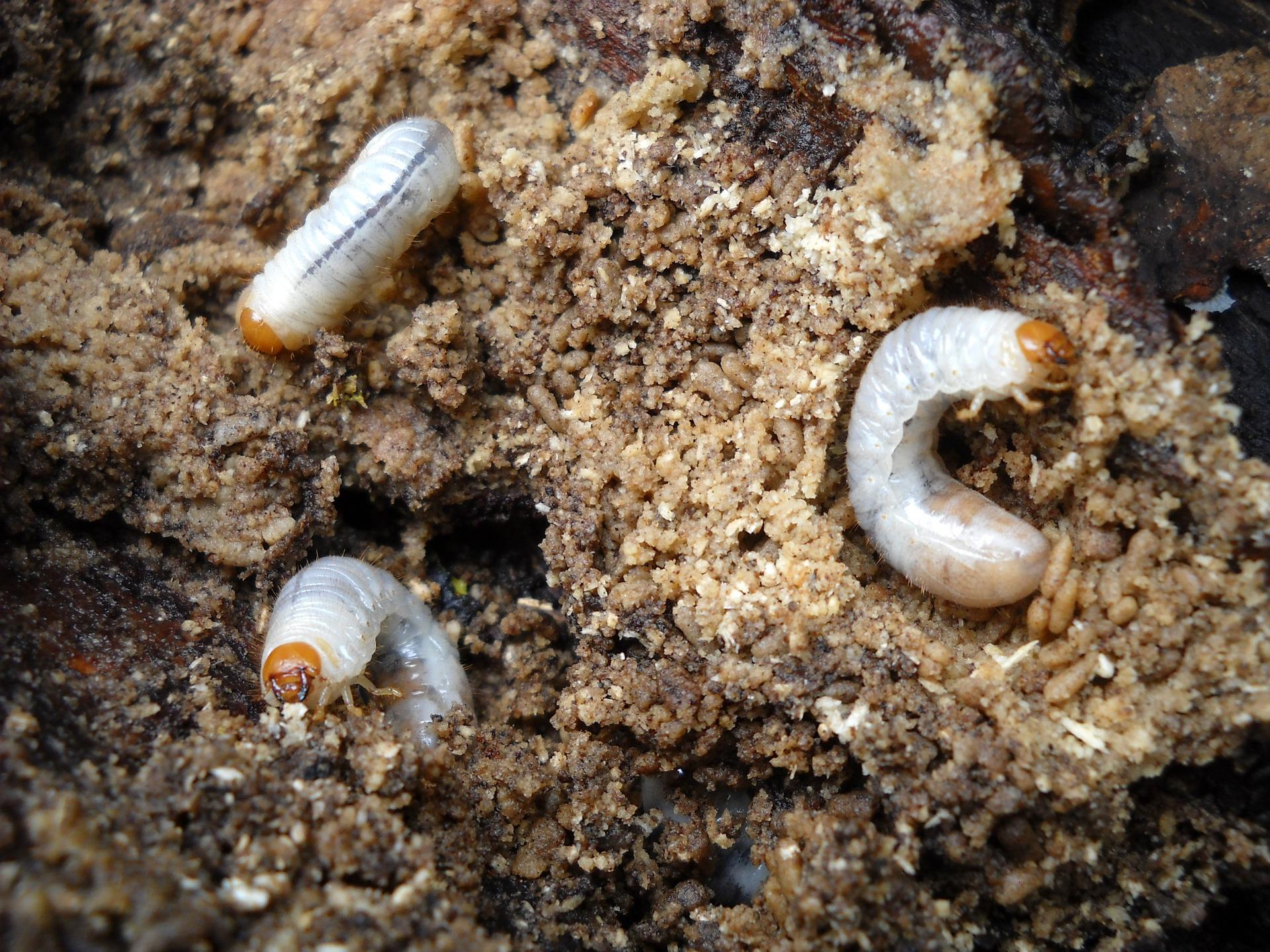
While a couple of pests here or there are no cause for concern, the problem is that most of these pests travel in numbers. All of the pests mentioned above can cause damage to a tree.
Plant diseases are also lurking in the landscape. Here in Louisville, there are more than 25 common plant diseases that we see pop up. Landscape diseases can be serious and need to be diagnosed by a professional. At the very least, diseases can cause cosmetic damage that will leave plants unsightly.
But in the worst-case scenario, diseases can kill your plants.
Proper plant disease identification is important before determining the best course of action for your tree, shrub, or other landscape plant.
Some of the plant diseases that we see turn up include:
This is a group of related fungal stem and leaf diseases that have been known to infect deciduous trees including Dogwood, Maple, Oak, Sycamore, Ash, and others. Symptoms include small dead spots on leaves, browning areas along leaf veins, premature defoliation, twig death, and dying buds in the early season, which can be misidentified as frost damage.
This fungal disease produces white or gray powdery growth that can affect the plant’s leaves, stems, and flowers. It is this powdery substance that is most identifiable but you might also see leaf distortion and discoloration.
This fungal disease is common in deciduous trees. It is characterized in its early stages by heavy seed production, leaves that are smaller than normal, and browning of the margins of leaves.
As the name implies, Root Rot is a general term for any disease with a pathogen that attacks the roots of trees. It’s usually a result of oversaturated soil.
This disease is caused by fungus-carrying Walnut Twig Beetles, which tunnel beneath the bark of walnut trees and create small cankers. Over time, repeated attacks and growing cankers can lead to the disruption of water and nutrients through the tree. This disease does not have a known cure.

Proper plant disease identification can be challenging as many symptoms of these diseases (and others) overlap with one another. In fact, many pest problems and environmental stressors can share similar symptoms as well.
This behooves the importance of having a professional perform a thorough evaluation of your landscape to determine what’s going on. A proper diagnosis will be critical to implementing the right treatment. We will talk more about how to prevent plant diseases (and pest problems), next.
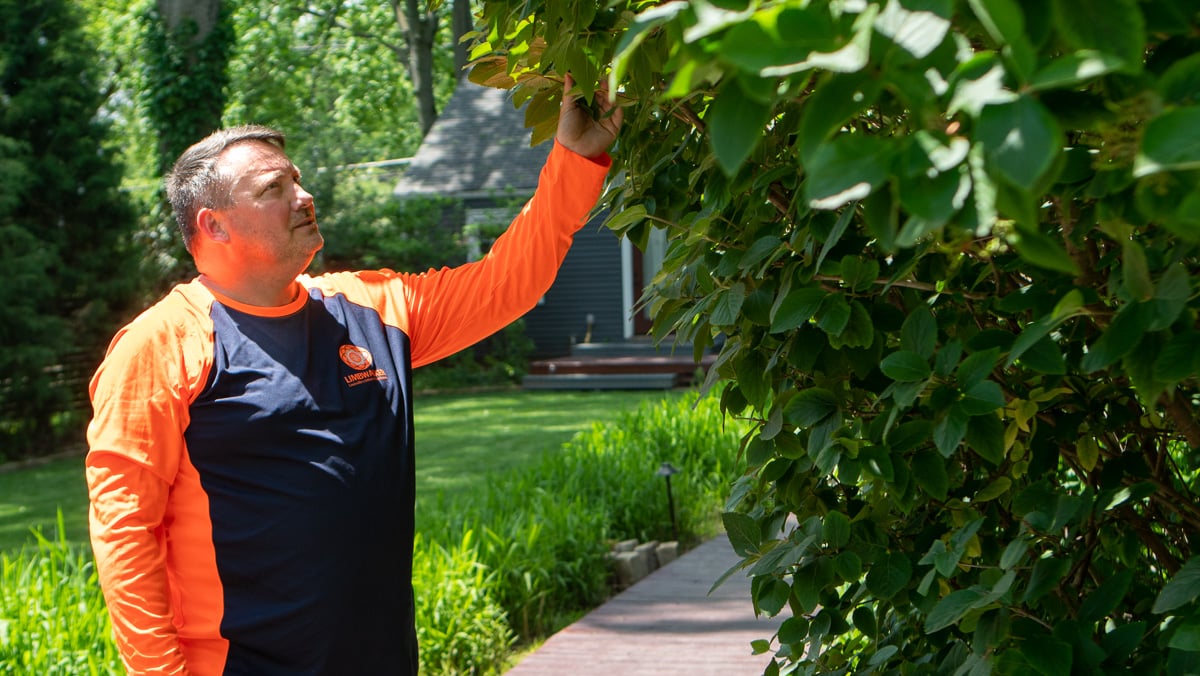
As with any plant problem, early detection is always best! Inspections and early interventions can help save your plants. Of course, some diseases are not treatable. Sometimes replacing your plants is best.
We know that Louisville homeowners don’t always give their plants much thought…unless there is a problem. Then, people want to know what they can do to fix an issue.
But the best strategy to protect plants is always a preventive one.
You want to take steps that you can to prevent a pest or disease problem in the first place. While even healthy plants can be subject to problems, the healthier your plants are, the better they will fare.
The best way to produce healthy plants that are more resistant to problems is with proper plant care. Specifically, Plant Health Care services involve a customized program with treatments that are designed for your property.

These services might include:
In many cases, Plant Health Care can PREVENT problems from occurring in the first place. That’s a big deal as problems generally cost at least twice as much (if not more) than simply investing in routine care.
You have to consider the fact that plants can succumb to problems (like pests and diseases) and end up dying. Now, you’ve got a hole in your landscape and will have to invest in new plant material to fill it. If it was an ornamental tree or shrub, that can be a costly fix.
And even when you do replace that tree or shrub, you still might have a hole that isn’t quite filled right if it was a mature plant that died.
Of course, it might be too late to prevent plant diseases or to prevent pest infestations. You might be reading this guide and already be dealing with a problem.
The best way to control plant diseases or treat pests will boil down to exactly what you’re dealing with. As we’ve expressed, proper identification is essential (whether it’s a pest, a disease, or even something else) so that the right treatment option can be implemented.
The good news is that many pest problems and diseases can be treated.

As with any problem, though, early detection is important. The earlier that you spot signs of a problem, the more likely that it can be treated in its early stages.
This is one of the benefits of having a plant health care professional on your property, evaluating what’s going on with the landscape. They will be more likely to spot signs of trouble early on.
While we’re focused on diseases and pests in this guide, we want to mention that plants are also subject to environmental stress. Simply existing in the residential landscape can be stressful for landscape plants like trees and shrubs.
Unlike the natural setting (the forest), where nutrients are readily available to trees and shrubs, your suburban landscape does not have as nutrient-rich soil as your trees and shrubs likely need to perform their best.
But plant health care services will include fertilization treatments that provide your plants with vital nutrients. This will help them to perform better even when subject to extreme stress like heat, drought, wind, and more.
Landscaping needs can differ based on the season. Some problems are more prevalent than others during certain seasons. Here are a few seasonal tips to keep in mind.
Spring is the start of the active growing season and is a wonderful time to begin enjoying your blooming and flourishing plants. But this is also an important time to make sure those plants are getting what they need.
As plants come out of dormancy and begin to grow again, they can be subject to more problems. This is a great time for inspections and early interventions.
Maintenance tasks in the spring might also include mulching, watering, and fertilization.
The harsh summer conditions are a time when pest and disease activity both may ramp up. You’ll definitely want to be monitoring for problems.
Proper watering also becomes critical in the summer as we often experience drought conditions. Water needs to be delivered slowly and steadily for optimal success. The proper amount is key as overwatering can lead to trouble with root rot and other issues.
Now is the time to be preparing for winter. We can apply preventive treatments and address any issues that might arise. Fall is also an important time for fertilization as many nutrients are likely depleted during the summer months.
Watering is still important, but you’ll likely be able to back off in the fall when there will be more natural rainfall and less evaporation. The soil tends to remain moist in the fall and trees are under less intense stress with the temperatures dropping.
The winter is the dormant season for plants here in Louisville. However, you might want to consider soil and plant bed preparations for the spring toward the end of the season.
Coming out of the winter, you can evaluate any plants that might have experienced freeze damage. It’s best to take preventative steps to avoid this type of damage.
Keep an eye on the temperatures and if some KY frost is coming, cover your plants with burlap, sheets, or blankets to trap warm air. Cardboard boxes can also work.
Just do not use plastic as this can be a cold conductor which might increase the chance of cold damage to plants.
If you’ve experienced any signs of trouble with your plants, it’s definitely time to call in a pro. Symptoms like discoloration, leaf drop, lesions, powdery substances, holes in leaves or the trunk, sticky substances, and more can all be indicators that something is wrong.
Of course, it’s better to not even wait until there’s trouble since you can often prevent tree and shrub diseases and pest problems by being proactive. As we’ve mentioned, plant health care can play a valuable role in preventing problems.
In order to implement effective plant care, we recommend turning to a professional.
It can be complicated to know what is attacking your landscape. The signs and symptoms of many problems mimic one another. Is it a pest, a disease, or something else?
It can honestly be hard to know without an untrained eye.
The good news is that you don’t have to figure any of this out on your own. This is why it’s so valuable to partner with a pro.

A plant health care professional will not only know what’s going on with your trees and shrubs, but they’ll know how to implement the best solution. Even better, they’ll be able to prevent many problems from occurring in the first place.
After all, the main goal is the protection of plants so that you don’t have to pay more to try and fix a problem (or have them replaced). If it’s a large tree that is severely diseased, removal might be your best course of action.
With an expert on your side, you can let go of these worries and instead get back to enjoying your property. You’ll be able to feel confident that insects, diseases, and other potential problems won’t stand in your way.
Of course, getting the best care will boil down to making a wise choice in professional services. Make sure to do your research and look for a company that has your best interest at heart.
When you do make a wise choice in plant health care, you will be able to let go of your worries and know that your landscape is in good hands.
At the end of the day, you just want to feel confident that your trees and shrubs can deal with whatever is thrown at them. There are many potential stressors in the landscape that can really cause problems for your trees and shrubs.
The last thing that you want is to lose any of your beloved plants to a problem that could have been prevented or treated.
At Limbwalker, we can help you protect your plants from problems in the landscape. There are some key reasons to consider choosing Limbwalker for plant care in Louisville.
Our products are safe for people, pets, and plants. We also use text notifications before and after each visit to keep you completely in the loop of what we’re doing.

We feel that you deserve to enjoy your landscape without worries. When you invest in plant health care, that’s exactly what you can do.
But even if you don’t choose Limbwalker, we want you to be happy. We are here to answer your questions and help guide you toward making the best choices for your property no matter what.
If you’d like to learn more about plant health care for your Louisville home, get in touch, get your quote, and get back to enjoying your yard.


